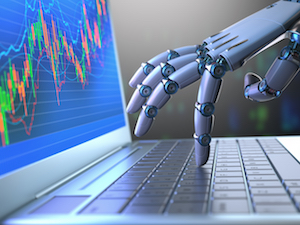 A new report issued by the Modern Markets Initiative[i] found that middle class workers can retire two years earlier due to the difference in retirement savings brought upon by market automation.
A new report issued by the Modern Markets Initiative[i] found that middle class workers can retire two years earlier due to the difference in retirement savings brought upon by market automation.
The somewhat inelegantly titled study, “A Report on Market Automation and Dependable Liquidity in Times of Uncertainty: Investor Savings from Narrowed Bid Ask Spreads, Markets Functioning as Intended,” analyzes multiple savings vehicles utilized by American investors, including public pension plans, 401(k) plans, Individual Retirement Accounts (IRAs), 529 college savings plans and ETFs to provide data showing the benefits of market automation in saving investors’ money with lower trading costs and narrower bid-ask spreads.
The report found that automated trading technology has ensured investors have 30% more in lifetime savings compared with a pre-electronic trading era before market automation.
Savings ‘Shavings’
The report claims that for an individual investor with an average 401(k) balance of $100,000, in a portfolio mixed with equities and bonds, that investor would have $165,000 more in lifetime 30-year savings as a result of automated trading technology. “In other words, without modern markets including automated trading technology, a middle class worker making $70,000 a year would have to work an additional two years to make up the difference in retirement savings,” the authors write.
The report goes on to note that the rate of return of a 401(k) mutual fund with market automation[ii] is estimated to be 9% on average, while the rate without market automation is 8%. With the return rate difference, individual investors are projected to save $1,940/year (for 10 years) and $5,523/year (for 30 years) in reduced trading costs as a result of automated markets per year, for an average 401(k) portfolio or IRA plan with $100,000 in assets.
Data from the report also shows that:
- California 529 plans save an average of $61 million a year—or tuition for 6,100 students—as a result of today’s efficient modern markets
- The Public Pension Fund Retirement Plan saves over 9.5 million working hours a year, or $125 million in cost savings from narrowed bid-ask spreads
Technological innovation in the capital markets, including market automation paired together with regulatory reform reducing minimum tick sizes, has driven down the cost of trading substantially over the past three decades, the report states.
Since the 1990s, electronification initiatives including automated trading technology, improved exchange technology, decimalization, Reg NMS (protecting linked markets), among other technological and regulatory developments, have made the overall trading ecosystem of the U.S. capital markets more accessible and have resulted in a 50% decrease in the cost of trading for retail investors.
“It is imperative that investors have confidence in the safety and soundness of the markets, and that the mechanics of the markets operate efficiently to deliver dependable liquidity and maximized cost savings,” the report states.
Mostly this is just math—quantifying a price differential narrowed by the existence of trade automation (such as narrowing the time between an order placed and its fulfillment)—and multiplying that by the total number of transactions. Of course, the accuracy of the result is highly dependent on the underlying assumptions—which as we have seen in other academic research, sometimes drift far from reality. But there’s little question that these tools have made certain things easier and more efficient, and may therefore be said to save investors not only time, but also money and effort.
[i] According to a press release, they are a non-profit education and advocacy organization for innovation in today’s markets.
[ii] Here we’re talking about things that are invisible to most people, things like the timing narrowing between bid and ask process, decimalization which also narrows that pricing gap, and lower trading prices within the funds themselves.

